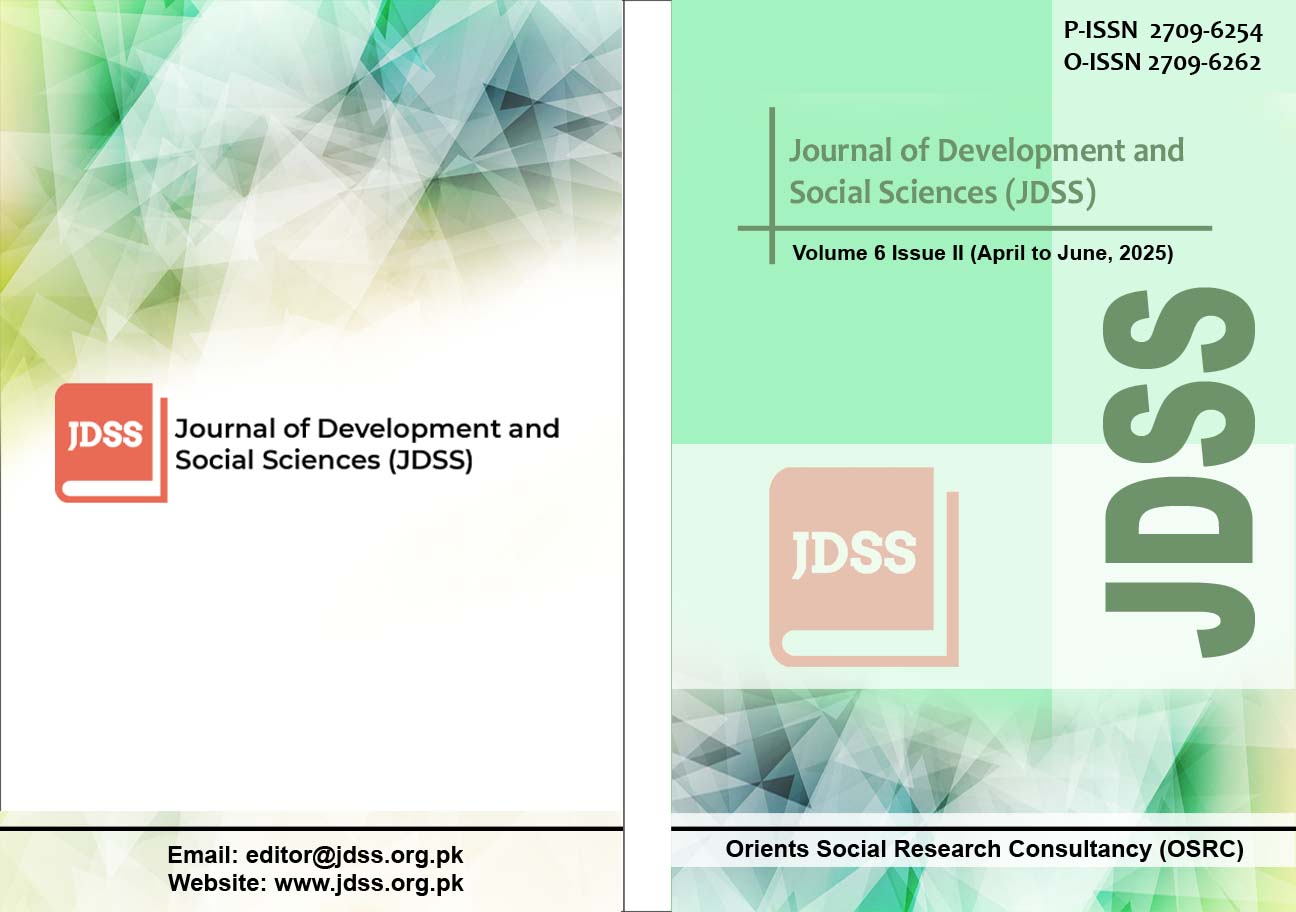From Roots to Rhizomes: Unveiling Migratory and Nomadic Trajectories in Hamid’s Exit West and Robinson’s The Ministry for the Future
DOI:
https://doi.org/10.47205/jdss.2025(6-II)20Keywords:
Migration, Nomadism, Rhizome, Deterritorialization, Conflict and Crisis, ScapesAbstract
In a world where displacement is the new norm of being, migration appears both as rupture and reinvention. This article focuses on Mohsin Hamid's Exit West (2017) and Kim Stanley Robinson's The Ministry for the Future (2020), and explores how migratory patterns of human and non-human entities, identity crisis and nomadic subjectivities are constructed and reshaped in times of planetary conflict and ecological collapse. Deleuze and Guattari's Rhizomatic Structures (1980), Rosi Braidotti's Nomadic Subjectivity (1994), and Arjun Appadurai's Concept of Scapes (1990) allow us to view these instances of migration not as individual acts, but as entrapments in global systems of capital, ecology, and culture. These two novels reject linear, origin-destination models of migration, and present it as an existential necessity— a continual negotiation of fragmented selves across unstable landscapes. Ultimately, this study contends that in contemporary fiction, migration becomes a philosophical condition, a way to re-conceptualize subjectivity beyond nationalism, territories, and stable identities in a world of uncertainty. Future studies can be carried out in the literary context of non-Anglophone diasporic literatures.
Downloads
Published
Details
-
Abstract Views: 271
PDF Downloads: 158
How to Cite
Issue
Section
License
Copyright (c) 2025 Journal of Development and Social Sciences

This work is licensed under a Creative Commons Attribution-NonCommercial 4.0 International License.

ORIENTS SOCIAL RESEARCH CONSULTANCY (OSRC) & Journal of Development and Social Sciences (JDSS) adheres to Creative Commons Attribution-Non Commercial 4.0 International License. The authors submitting and publishing in JDSS agree to the copyright policy under creative common license 4.0 (Attribution-Non Commercial 4.0 International license). Under this license, the authors published in JDSS retain the copyright including publishing rights of their scholarly work and agree to let others remix, tweak, and build upon their work non-commercially. All other authors using the content of JDSS are required to cite author(s) and publisher in their work. Therefore, ORIENTS SOCIAL RESEARCH CONSULTANCY (OSRC) & Journal of Development and Social Sciences (JDSS) follow an Open Access Policy for copyright and licensing.







